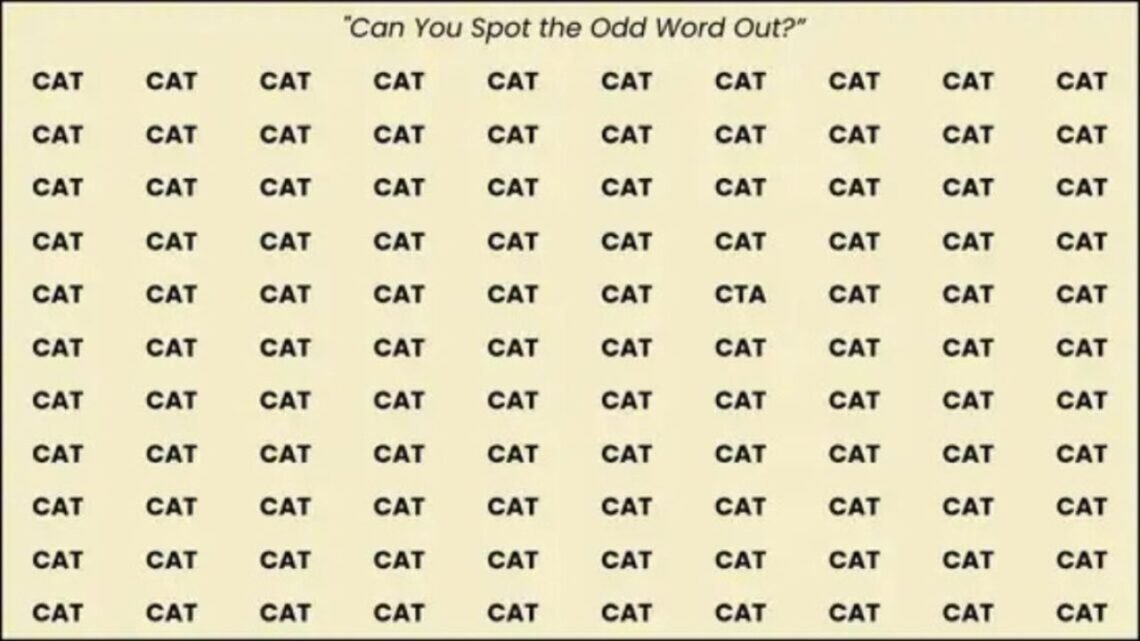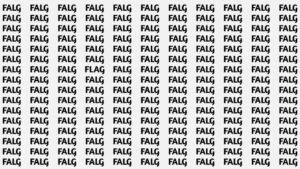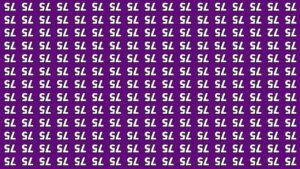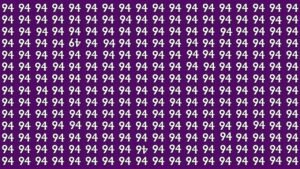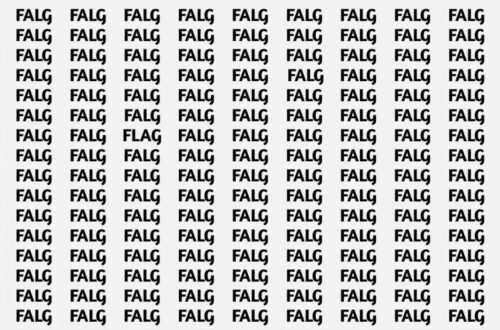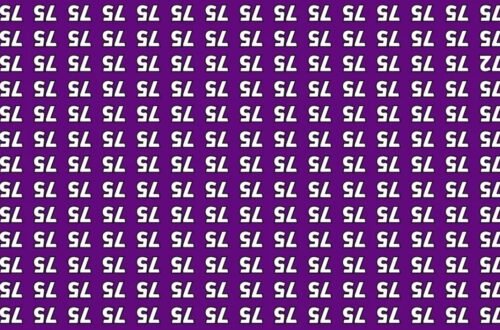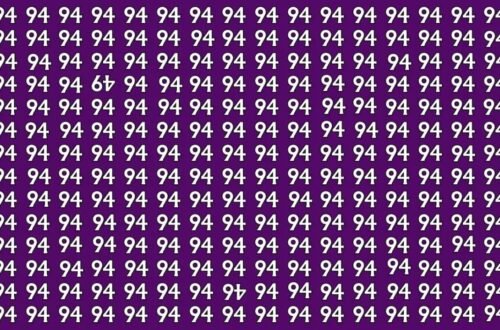Ready for a rapid-fire brain teaser? Your mission is simple—yet devilish. In a dense grid of 110 “CAT” strings, exactly one entry is “CTA.” Your goal is to spot the difference in 10 seconds or less.
Because the three letters are identical and only the order changes, this optical illusion exploits your pattern bias: your eyes “auto-complete” CAT and slide past CTA. Below, you’ll find a crisp overview, science-backed strategies, and quick tips to sharpen your time.
Puzzle At A Glance
| Item | Detail |
|---|---|
| Total strings | 111 (110 CAT, 1 CTA) |
| Time limit | 10 seconds |
| Display style | Dense letter grid or block text in uniform font/size |
| Target | CTA (letters in order: C → T → A) |
| Common traps | Seeing CAT when the middle letter is actually T followed by A; skipping lines; tunnel vision |
| Best strategies | Middle-letter scanning, zigzag sweeps, chunking into lanes, finger/cursor tracking |
| Difficulty | Moderate to hard (increases with tighter spacing and similar font weights) |
Why This Illusion Works
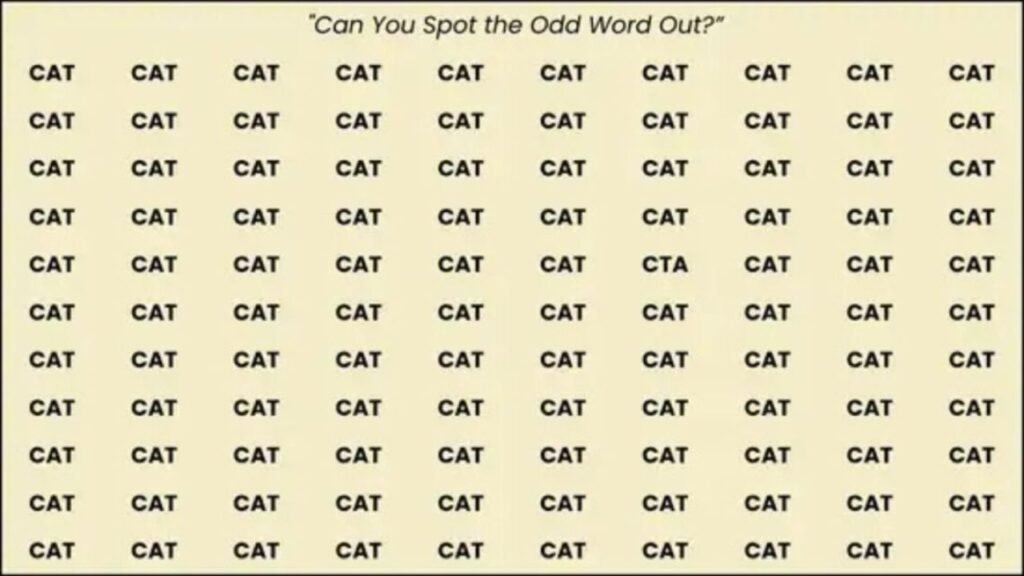
- Pattern Expectation: Your brain loves familiar patterns. Seeing hundreds of CAT repetitions primes you to “read” CTA as CAT.
- Transposition Blindness: Swapping letter positions (T and A) within the same triad can pass unnoticed at speed.
- Crowding Effect: Dense, uniform text reduces letter-level resolution in peripheral vision, slowing anomaly detection.
Step-By-Step Strategy To Find CTA Fast
- Start With the Middle Letter: Instead of reading “C-A-T,” scan for “CT” pairs and immediately check whether the third letter is A. This mid-letter focus breaks the CAT autopilot.
- Sweep in a Zigzag: Move left→right on one line, then right→left on the next. This reduces eye “return time” and helps you keep the grid covered without gaps.
- Use Lanes (Chunking): Divide the grid into equal vertical “lanes” (e.g., columns of 4–6 triads). Clear a lane before moving on.
- Finger/Cursor Assist: Trace lightly with a finger or cursor to keep attention from drifting and to maintain line discipline.
- Micro-Check The Tail: Whenever you spot C followed by T, verify the last letter. If it’s A, you’ve found CTA; if it’s C-A-T, move on instantly.
Speedrun Tips For The 10-Second Goal
- Center First: Designers often hide anomalies near the center where eyes initially land but quickly move away. Make a quick central scan, then work outward.
- Uniform Font, No Italics: High similarity makes the illusion stronger. If you’re hosting the puzzle, stick to a clean sans-serif with even spacing.
- Keep Contrast High: Black text on white background (or vice versa) speeds letter discrimination under time pressure.
- Avoid Vocalizing: Saying “CAT” in your head reinforces the pattern. Mentally search for “C-T-A” instead.
Common Mistakes To Avoid
- Skipping Lines: Without a lane system, you’ll double-scan some rows and skip others.
- Reading Full Words: Full-word reading slows you down. Scan letter positions (C→T→A) rather than “reading” CAT repeatedly.
- Over-Zooming: Too much zoom narrows your field of view; too little zoom blurs letter edges. Find a Goldilocks level where letters are crisp but multiple rows fit on screen.
Solution
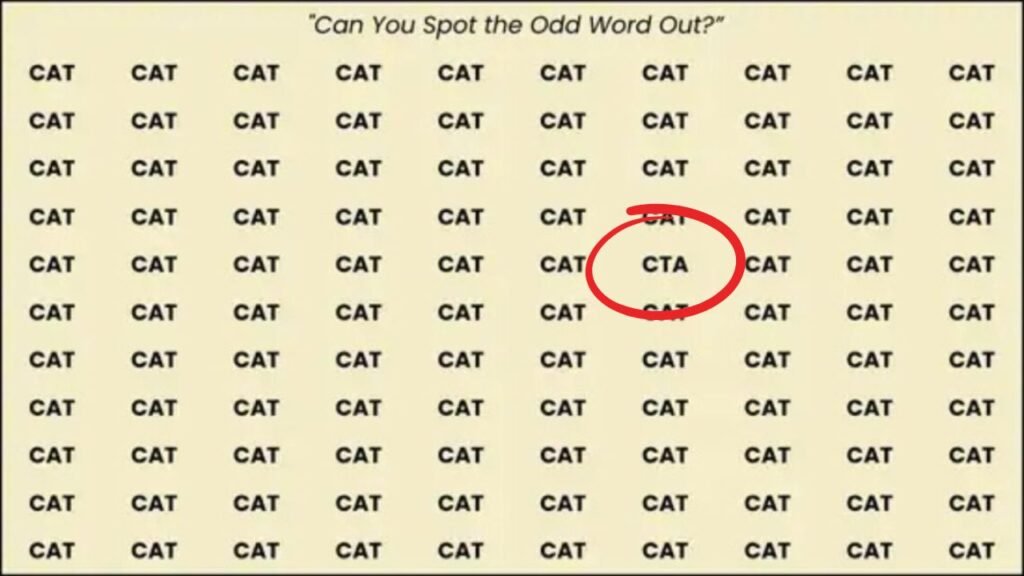
The odd string is “CTA”—the only triad where the letters appear in the order C–T–A instead of C–A–T. The quickest way to find it is to ignore full words and scan for the “CT” pair first; the moment you see C immediately followed by T, confirm the third letter is A.
In the standard layout of this puzzle, CTA sits in the central third of the grid, slightly right of center, flanked by regular CAT entries, which is why your eyes tend to skip past it at speed.
This quick optical illusion looks simple—but by hijacking your pattern recognition, it makes one swapped triad devilishly hard to catch under a 10-second clock.
Shift from word-reading to letter-position scanning, use zigzag sweeps, chunk the grid into lanes, and lock your attention on “C-T-A.”
With these tactics, you’ll train your visual system to slice through crowding and spot the CTA needle in a CAT haystack—fast.
FAQs
How many items are in the puzzle?
111 total: 110 “CAT” strings and exactly one “CTA.”
What’s the single best trick to hit 10 seconds?
Scan for “CT” pairs first, then confirm the last letter is A. This short-circuits the CAT autopilot.
Does font choice change the difficulty?
Yes. Uniform, sans-serif, monospaced fonts with tight spacing make the illusion harder; decorative fonts or irregular spacing make CTA easier to spot.

